The 2024 Yankee Food Awards
Whether working wonders in restaurant kitchens or lending inspiration to your own, these culinary standouts represent the best of New England food right now.
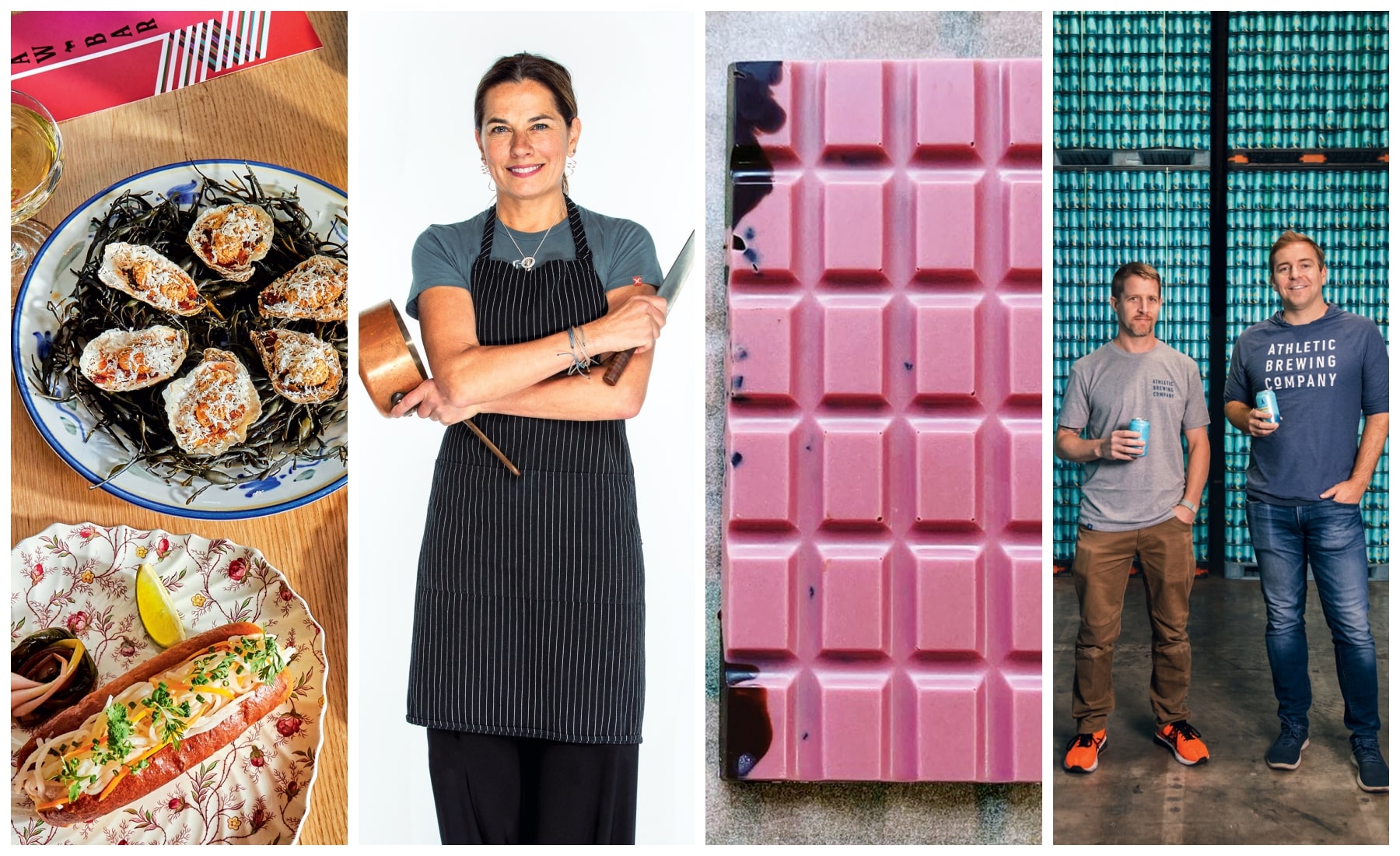
L-R: Gift Horse in Providence, RI; Melissa Kelly of Primo in Rockland, ME; Enna Chocolate in Exeter, NH; Athletic Brewing Company in Milford, CT
When Yankee’s annual Food Awards debuted back in 2013, we singled out artisan makers whose cheeses, chocolates, and other delicacies were helping put New England on the map. “This old land of cod and beans has become a hotbed of culinary innovation,” we proclaimed back then—and it’s something that’s still true today.
But this year, the spotlight has expanded to include the chefs and restaurants that make this region a dining destination to equal any in the country. As Yankee’s food editor, I looked for people and places with both consistently amazing food and a newsworthy achievement in 2024, whether it was hitting a landmark anniversary or transforming a menu. I also sought out the best representatives of four of the year’s biggest dining trends: tasting menus, mocktails, vegan dining, and mezcal.
Alongside these new honorees is a selection of the region’s best artisan foods, which, as in years past, were chosen because they are exceptional, made in New England, and available to all (i.e., they can be shipped nationwide).
The goal? To give you the most complete snapshot of the best New England food right now, whether you’re dining around the region, shopping for the perfect gift, or simply searching for something new and exciting to add to your holiday meal.
The 2024 Yankee Food Awards
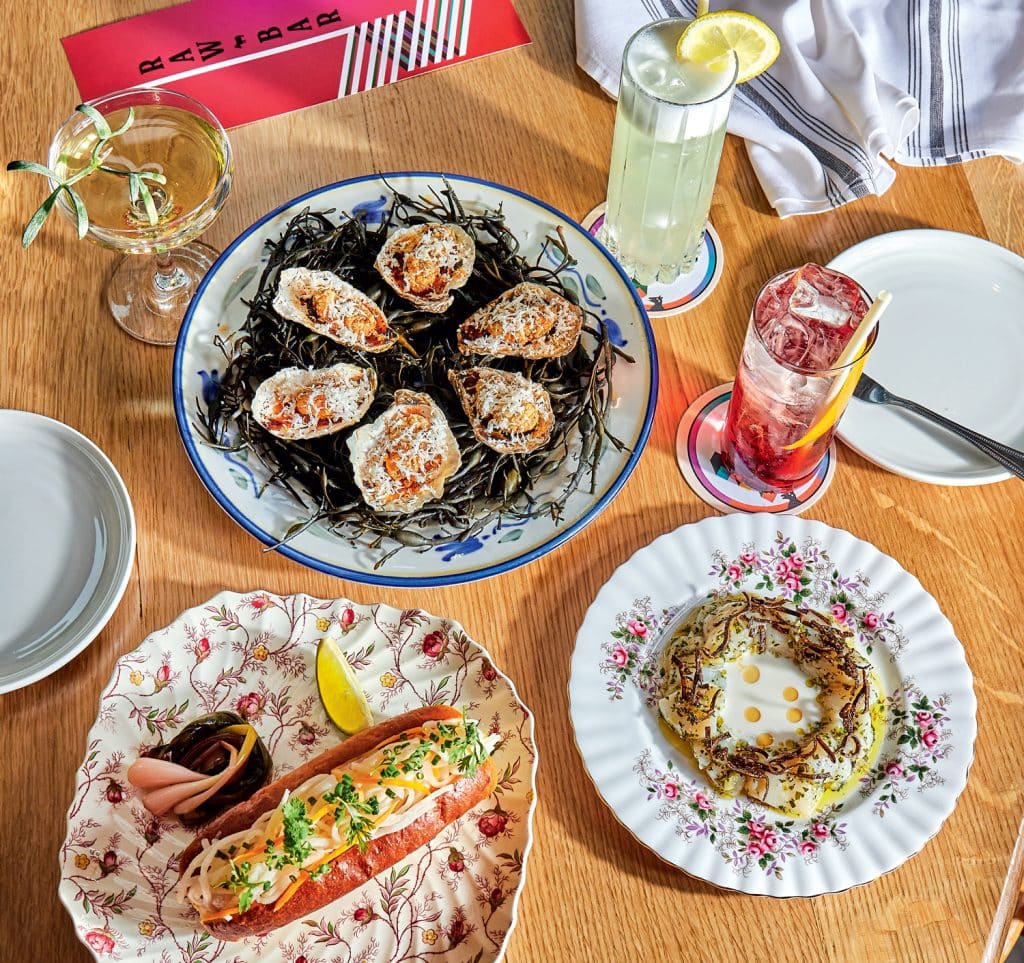
Photo Credit : Angel Tucker
Restaurant of the Year:
Gift Horse (Providence, RI)
Benjamin Sukle and Bethany Caliaro’s newest restaurant has earned plenty of laurels over the past year. Chef Sky Haneul Kim was a semifinalist for a James Beard Award, while Gift Horse was named to USA Today’s “Restaurants of the Year” and Esquire’s “50 Best New Restaurants in America.” Here’s why I’m piling on: Providence has a well-earned reputation as one of the most innovative restaurant towns in New England, and this raw-bar/small-plates concept does that rep proud. Doughboys served with caviar, crispy seasonal fish ssam served with seasoned rice and spicy peanut dipping sauce … the list goes on. Surprise and delight are precious commodities, and both are found in abundance here.
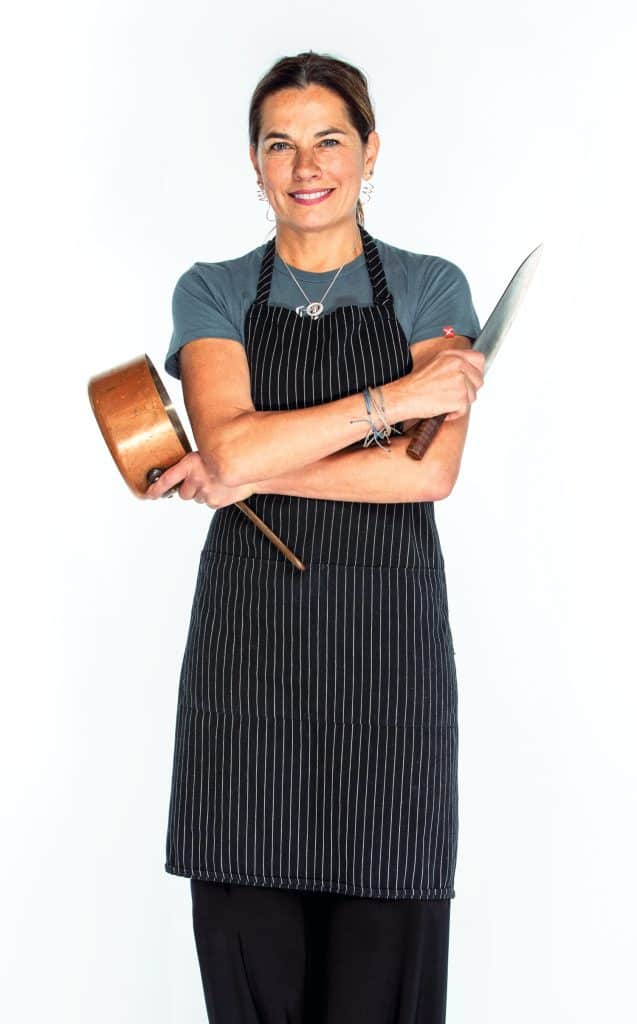
Photo Credit : Derek Bissonette
Chef of the Year:
Melissa Kelly, Primo (Rockland, ME)
One of the East Coast’s original farm-to-table chefs, Kelly is among the few to build an actual farm on her property, complete with greenhouses, gardens, beehives, and chickens, pigs, and ducks. This bounty drives her Italian-accented menu, which is ever changing but always stocked with homemade pastas and breads, meat dishes like porcini-dusted steaks and pork saltimbocca, wood-fired pizzas, and local cheeses. And as Primo celebrates its 25th anniversary this year, it’s the perfect time to sing Kelly’s praises.

Photo Credit : Brian Samuels
Pastry Chef of the Year
Renae Connolly, Moëca and Giulia (Cambridge, MA)
Save room for dessert; make time for art. It’s highly achievable advice when you’re about to savor one of Connolly’s creations—maybe a beach plum macaron filled with vanilla–lemon custard ice cream perched atop pistachio sabayon, or a perfect oval of milk chocolate mousse with a “magic shell” drizzle on a bed of sesame shortbread crumble. Discover treats like these at global-seafood spot Moëca; at its sister restaurant, Giulia; or at Connolly’s recently debuted “Daydreamer” ice cream pop-up series. @renae.connolly on Instagram
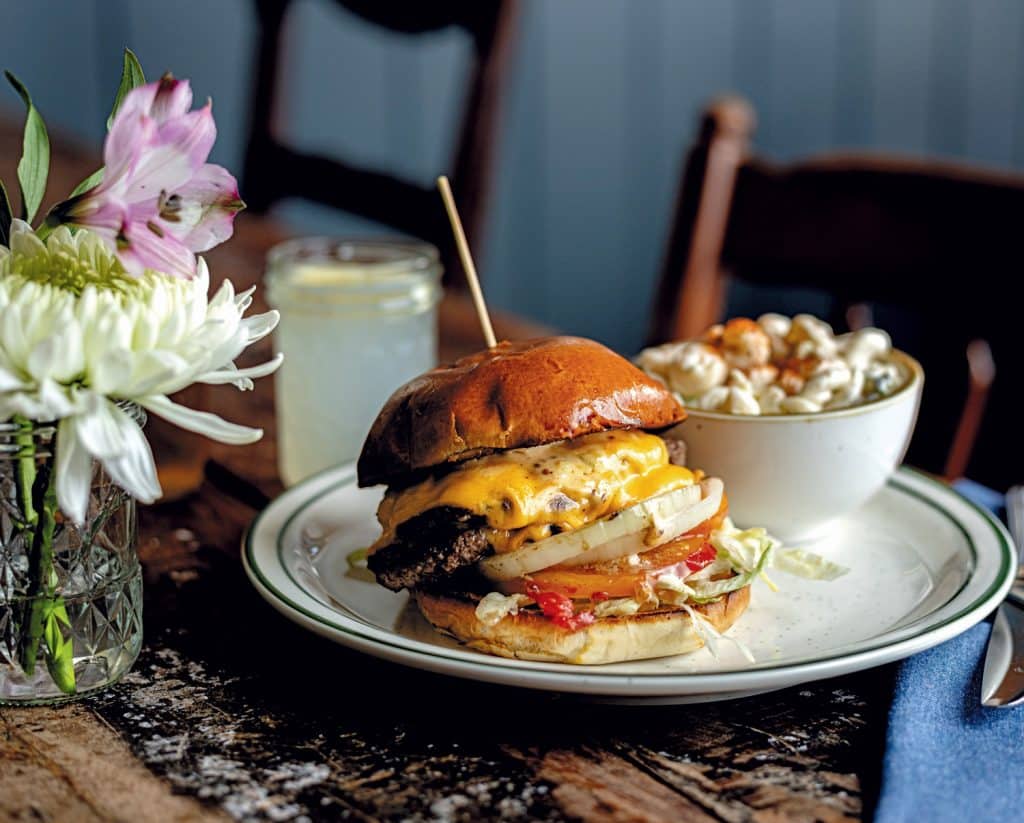
Photo Credit : Lisa Nichols/Bread & Beast Photography
Waterfront Restaurant of the Year
Haring’s (Noank, CT)
A cozy coastal village at the mouth of the Mystic River, Noank is one of Connecticut’s hidden gems. And it’s here that a white dockside shack festooned with lobster buoys, formerly Ford’s Lobster, was acquired by the team behind award-winning Mystic restaurants Oyster Club and The Port of Call and reopened this summer as Haring’s. Grab a table on the pier and tuck into a smashburger, lobster bisque, broiled scallops with grits and tomato-bacon jam, or a fried seafood platter—all a level up from what you’d find at many waterfront tourist spots. Combine fair prices with a fresh sea breeze, and you have one of my favorite new spots in New England.

Photo Credit : Brio Coffeeworks
Coffee Shop of the Year
Brio Coffeeworks (Burlington, VT)
New England loves its cafés, the best of which roast their own beans, make great coffee drinks, and offer a community vibe. That’s check, check, and check at Brio, which transforms its award-winning single-origin and blended beans into perfect coffees, espressos, and canned nitro drinks. It also donates a percentage of its sales to the nonprofit Food 4 Farmers. And as of this summer, Brio is a featured vendor at the World Trade Center Oculus in Manhattan, at a store called Local Maverick. It’s been a big year for Brio, and I’m happy to see them making a splash beyond our borders.
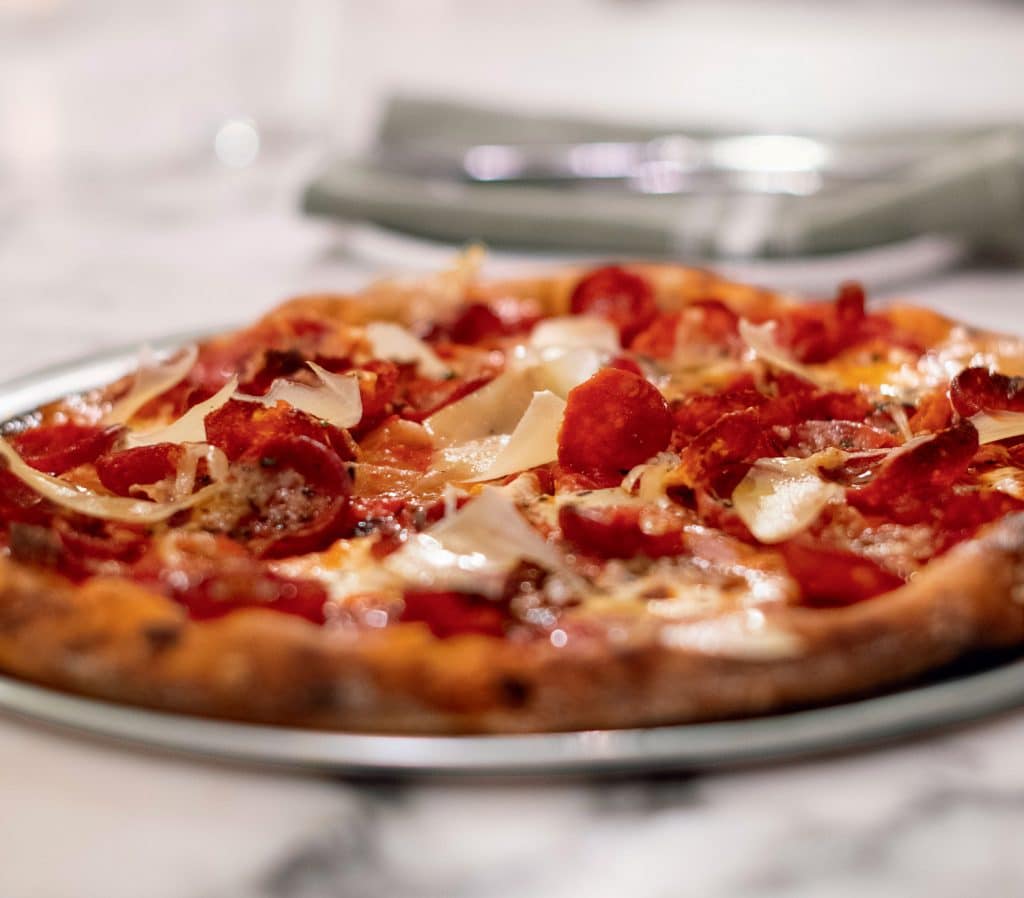
Photo Credit : Caleb Kenna
Pizza Place of the Year
The Tillerman (Bristol, VT)
I’ve called out Bristol as one of New England’s best up-and-coming food towns, and The Tillerman is a big reason why. Located in a refurbished inn of the same name, it turns out wood-fired sourdough-leavened pies topped with farm-fresh seasonal ingredients and house-made mozzarella. The surroundings are cozy, and the food demonstrates a mastery of flavor and technique. I especially love the potato, blue cheese, and mushroom, and the pepperoni with Italian sweet peppers.

Photo Credit : Courtesy of Far Out Ice Cream
Ice Cream Shop of the Year
Far Out (Brookline & Boston, MA)
Far Out specializes in New Zealand–style ice cream, which blends frozen bananas, mangos, blueberries, and other fruit into vanilla or chocolate ice cream, yielding a more fruit-forward blend. The ice cream itself is super-premium stuff from Maple Valley Creamery in Hadley, so this is, in a sense, an award for both spots. As of this year, Far Out has a new location near Fenway Park, and I hope it’s just the first of many more iterations.
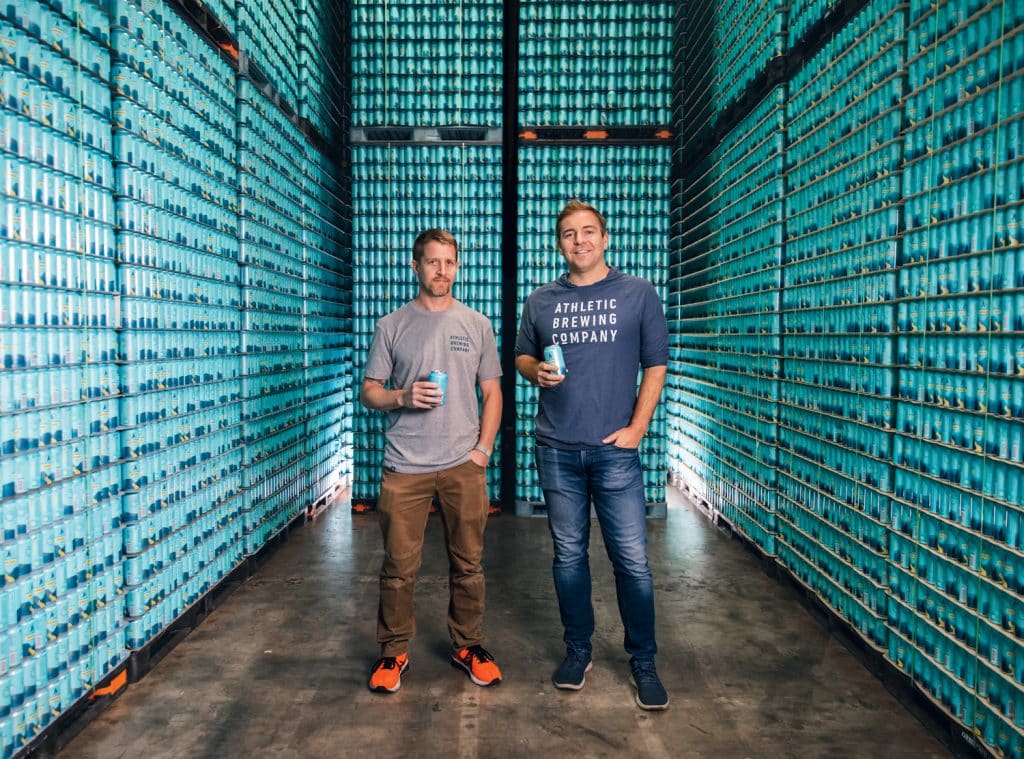
Photo Credit : Courtesy of Athletic Brewing Company
Brewery of the Year
Athletic Brewing Company (Milford, CT)
Gen Z and millennials are drinking less beer and wine, which may be why Athletic Brewing has become such a juggernaut. Its nonalcoholic beer truly tastes like beer, and comes in a range of styles from IPAs to sours to goldens. In the summer, I’ll sip the lemony Ripe Pursuit; in winter, the All Out stout. This certified B Corp secured funding this year to become a bona fide national brand, while also winning a gold medal at the North American Brewers Association’s International Beer and Cider Awards.
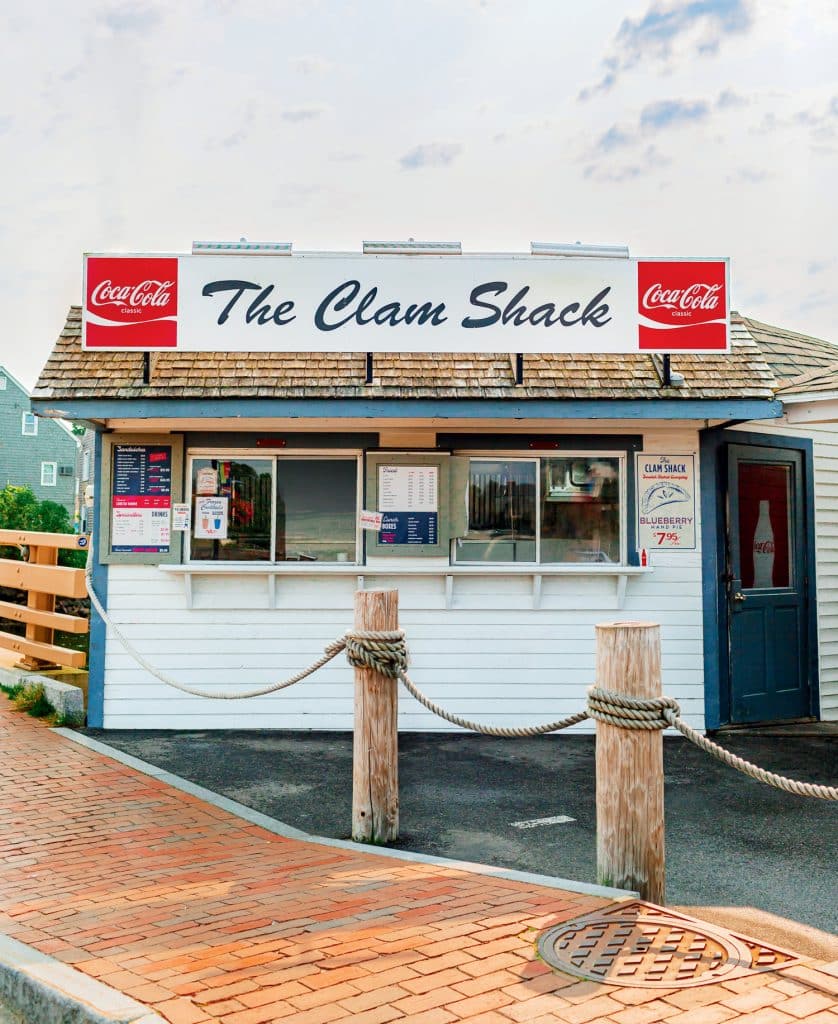
Photo Credit : Tiffany Mizzell Photography
Seafood Shack of the Year
The Clam Shack (Kennebunkport, ME)
Having survived flooding last winter that damaged its on-site seafood market, The Clam Shack came back strong this summer with its signature lobster rolls, fried clams, and fresh-squeezed lemonade. Owner Steve Kingston is a stickler for quality, and that shows in the food: In the countless times I’ve visited here, I’ve never had a disappointing meal. (Note: The Clam Shack is closed until spring, but it ships kits that allow anyone to make its clam chowder, lobster rolls, and fried clams at home.)
4 Food Trends of 2024
1. Tasting Menus
311 Omakase (Boston, MA)
Facing labor shortages and inflation in recent years, many chefs have pivoted to serving set menus for a fixed price. Meanwhile, sushi restaurants have been doing it for decades. At his restaurant set in a classic South End brownstone, chef Wei Fa Chen makes deceptively simple sushi that layers luxury ingredients like truffle, caviar, and lobster with perfect pieces of tuna, crab, and amberjack. It’s a splurge, but you’ll be wowed.
2. Mezcal
Dos Gatos Gastropub (Belfast, ME)
At Dos Gatos, owners Adam Roberson and Jesse Soto translate their love of mezcal—tequila’s smokier, artsier sister—into negronis, Moscow mules, and old-fashioneds. Chef Gary Cooper even threads mezcal through the menu of truly superlative tacos made with homemade tortillas. And there’s plenty of tequila to go around, too.
3. Vegan Dining
Foglia (Bristol, RI)
A 2024 James Beard Award semifinalist, chef Peter Carvelli creates dishes loaded with hearty flavor and textures that run from creamy to crisp—in other words, you won’t miss the meat. Instead, this is a great restaurant that happens to be vegan. Foglia is also friendly to gluten-free diners: Almost every dish is either gluten-free or can be made so.
4. Mocktails
Aurelia at Castle Hill (Newport, RI)
Reflecting the trend toward tasting menus, Aurelia offers six fixed courses with choices for mains and dessert. Another choice? To enjoy your meal with wine pairings or nonalcoholic cocktails designed to match each course’s flavor profile. That might mean a savory mushroom-infused “tea” with a dish of venison and morels, or a nonalcoholic G&T with your hors d’oeuvres.
Artisan Food Makers
Hot Drinks
Golden Milk Turmeric Tea by Mola Foods (Nashua, NH)
LaFortune Djabea founded Mola Foods in 2016 after moving to the U.S. from Cameroon. Now she makes spice blends, seasonings, sauces, and teas inspired by the flavors of West Africa and beyond. Her Golden Milk Turmeric Tea is a sunny, cozy mix of honey, coconut milk powder, cinnamon, cardamom, turmeric, and other spices that’s delicious stirred into hot (or cold) milk.
Classic Hot Chocolate by My Original Coco (Norwich, VT)
It tastes like cocoa. It is cocoa. But compared with the typical mix, My Original Coco’s version has a more complex chocolate flavor—you’ll taste notes of fruit and nuts—and less sugar, though it’s still sweet enough for kids to love. It’s also dairy-, gluten-, and soy-free.
Mint Tea by Cup of Sea (Portland, ME)
Hear the phrase “seaweed tea,” and you might imagine a strange, salty brew. Not so! After being washed and dried, seaweed isn’t salty at all (dulse being the one exception) and can taste very much like green tea. Cup of Sea uses mineral-rich varieties such as kelp and sea lettuce and blends them with black, green, and herbal teas. The mint tea blend combines dried peppermint with kelp to make an invigorating but uncaffeinated sipper, perfect for morning or night.
Sweets
Chocolate Jewels by ChocAllure (Wellesley, MA)
Liron Gal makes some of the most spectacular chocolates imaginable: bonbons in bright colors, shiny as lip gloss, and filled with multiple layers of praline, ganache, and caramel or fruit purees, with textures that range from crunch to cream. We adore the s’mores bonbon with its vanilla marshmallow, dark chocolate ganache, and graham cracker crunch.
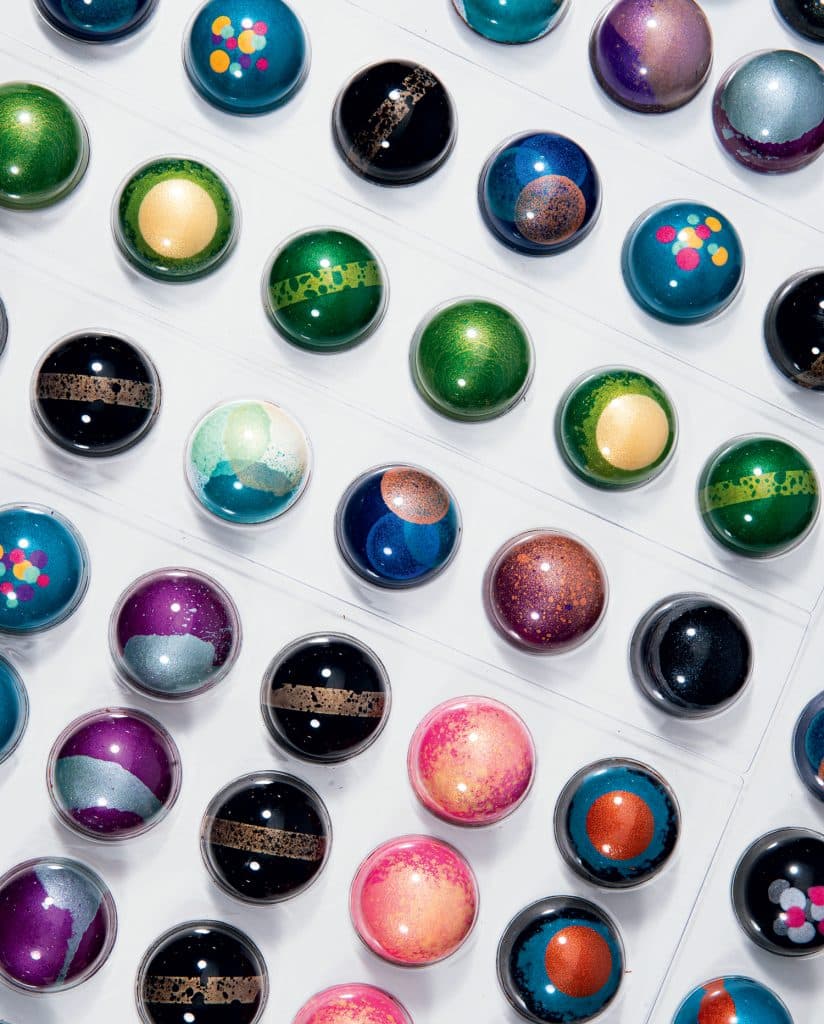
Photo Credit : Adriana Kopinja
“Daydream’s” Sea Salt Caramels by Milk House Chocolates (Goshen, CT)
These treats begin with a Jersey cow named Daydream at Thorncrest Farm in the Litchfield Hills. Her milk, butter, and cream are exclusively used to make these delectable caramels—enrobed in milk and/or dark chocolate and dusted with crunchy sea salt—at the farm’s own Milk House Chocolates. Other cows in the herd contribute milk, cream, and butter to produce a full line of single-cow-origin chocolates and bars.

Photo Credit : Courtesy of Enna Chocolate
Ursa Major Bar by Enna Chocolate (Exeter, NH)
The finest sustainably sourced chocolate from places like Ecuador, Haiti, and Uganda goes into all of Enna Grazier’s wonderful bars, but we were especially taken with the Ursa Major, whose raspberry white chocolate plays beautifully against dark chocolate from Tanzania, as cocoa nibs add crunch.
Sauces & Vinegars
Brown Butter Squash Alla Vodka Sauce by Trenchers Farmhouse (Lyndonville, VT)
Having met in Italy and cooked in Michelin-starred restaurants in the U.S. and abroad, Giacomo and Jenny Vascotto came to Vermont after Jenny’s mother retired to a 100-acre property in the Northeast Kingdom and invited them to join her. There, they make Italian pastas and sauces featuring Vermont-grown grains and their own eggs and vegetables. We love the warm spices and velvety sweetness of their squash alla vodka sauce, especially when tossed with their fresh fettuccine.
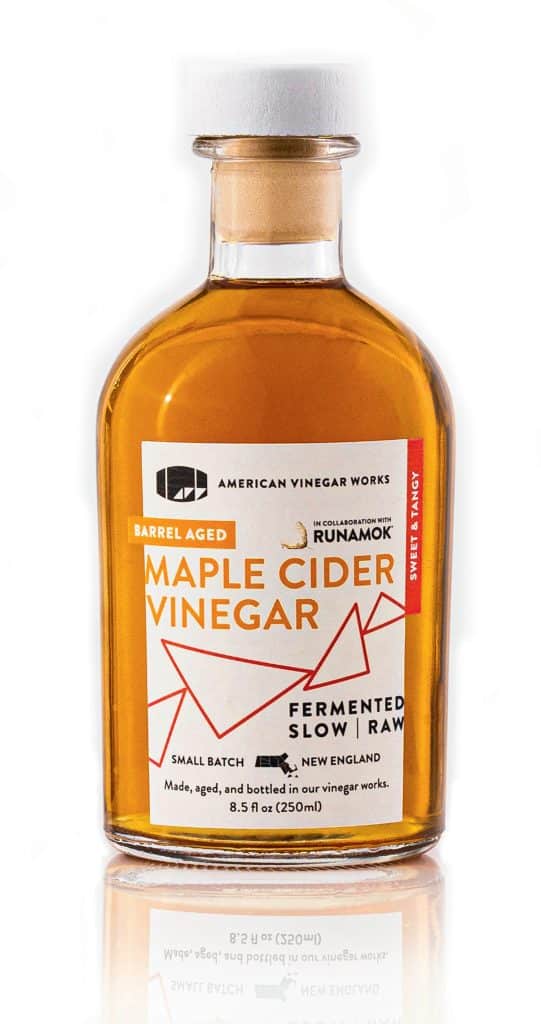
Photo Credit : Courtesy of American Vinegar Works
Maple Cider Vinegar by American Vinegar Works (Worcester, MA)
Following an early-19th-century recipe, Rodrigo Vargas ferments vinegars slowly and ages them in oak. The results are balanced, subtle, and guaranteed to up your salad game. His maple cider vinegar starts with local apples and gets just a hint of sweetness from Vermont maple syrup, provided by previous Yankee Food Awards honoree Runamok Maple.
Massaman Curry Paste by Little Trúc (Easthampton, MA)
Far more vibrant than canned curry pastes, Little Trúc’s version is made fresh with shallots, lemongrass, garlic, spices, and chilies. With this and some coconut milk, you’re halfway to a delicious and easy-to-make Thai-accented dinner—try it atop a stew of diced squash, greens, and chicken served over rice.
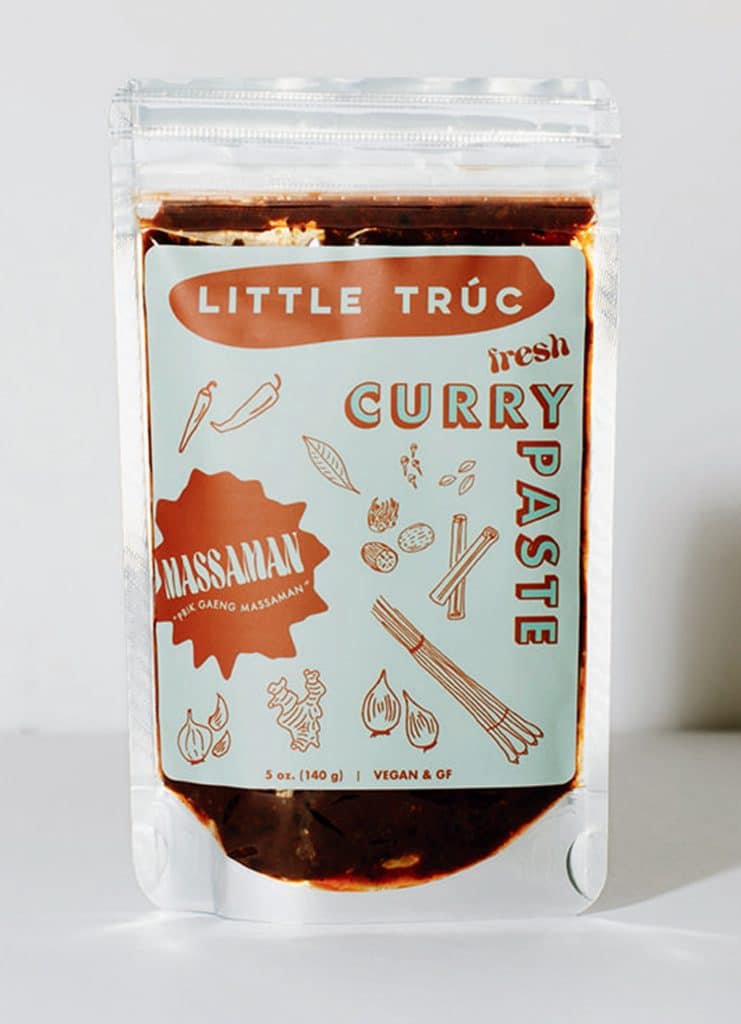
Photo Credit : Courtesy of Little Trúc
See More:
Best of New England | 2024 Summer Travel Guide
The 2022 Yankee Food Awards | Celebrating 10 Years
Amy Traverso
Amy Traverso is the senior food editor at Yankee magazine and co-host of the public television series Weekends with Yankee, a coproduction with WGBH. Previously, she was food editor at Boston magazine and an associate food editor at Sunset magazine. Her work has also been published in The Boston Globe, Saveur, and Travel & Leisure, and she has appeared on Hallmark Home & Family, The Martha Stewart Show, Throwdown with Bobby Flay, and Gordon Ramsay’s Kitchen Nightmares. Amy is the author of The Apple Lover’s Cookbook, which was a finalist for the Julia Child Award for best first-time author and won an IACP Cookbook Award in the “American” category.
More by Amy Traverso

